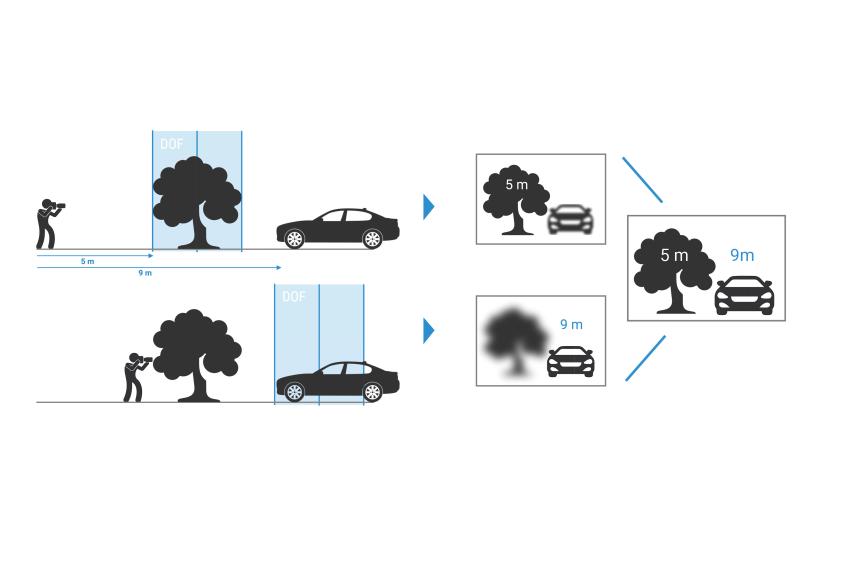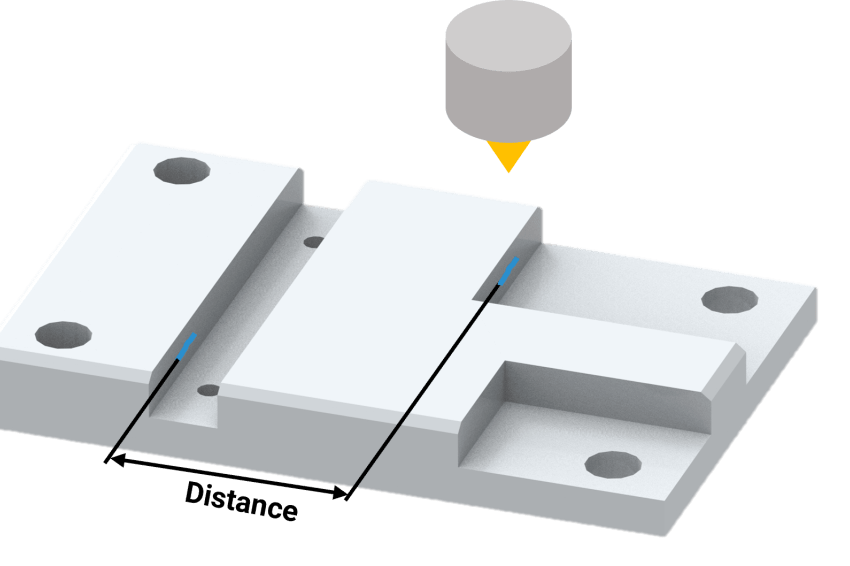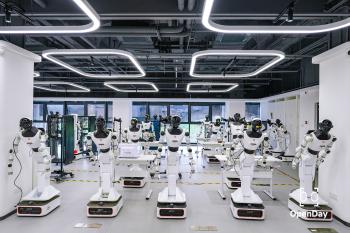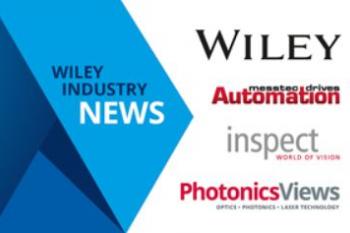Optical Metrology Technology: Focus-Variation and its Advanced Extensions
10.07.2025 - Basics of Measurement Technology
Optical technologies have become indispensable in non-contact surface measurement, particularly for complex micro-geometries and high-resolution surface characterization. Among these, Focus-Variation has established itself as a robust and versatile method. But as production requirements evolve, so must the technologies behind quality assurance. This article explores how Focus-Variation has been extended to meet new challenges—through Advanced Focus-Variation, Verti-cal Focus Probing, and Focus Probing.
Focus-Variation combines the limited depth of field of an optical system with vertical scanning to generate high-resolution 3D surface data. As the system scans vertically, it captures a stack of im-ages at different focus levels. For each lateral position, the point of maximum sharpness is deter-mined, resulting in a topographic map of the surface. This method is particularly effective for measuring steep flanks (up to 87°), varying surface reflectivities, and microstructures, while also providing true-color information.
Its flexibility in illumination—ranging from coaxial to ring light and polarized light—makes FV suita-ble for a wide range of materials and surface conditions. However, traditional FV has limitations when it comes to extremely smooth or highly reflective surfaces, as well as vertical geometries.
Advanced Focus-Variation: Pushing the Boundaries
Advanced Focus-Variation (AdvFV) is a significant enhancement of the original FV principle. It was developed to address the limitations of standard FV when measuring surfaces that are smooth, specular, or polished to a mirror finish. These surfaces typically lack the micro-texture needed for conventional focus-based depth detection. AdvFV overcomes this by using optimized illumination strategies and advanced signal processing to extract reliable topographic data even from low-contrast regions.
The technology features an improvement in both lateral and vertical resolution while significantly reducing measurement noise. The result is a system capable of delivering nanometer-level preci-sion across a wide range of surface types.
AdvFV also ensures consistent performance across different magnifications and objectives, making it suitable for both roughness and form measurements. It is robust against environmental influ-ences such as vibration and temperature fluctuations, which makes it ideal for use in production environments.
Vertical Focus Probing: Measuring the Unmeasurable
One of the most significant breakthroughs enabled by AdvFV is Vertical Focus Probing (VFP). This technique allows for the optical measurement of vertical walls and deep micro-holes—features that were previously only accessible through tactile or computed tomography methods.
VFP works by leveraging partial illumination and detection cones. Even when the surface is orient-ed parallel to the optical axis, a portion of the reflected light can still be captured, enabling the sys-tem to reconstruct vertical geometries. Unlike standard FV, which assigns one height value per lateral position, VFP can assign multiple height values, effectively capturing undercuts and steep internal features.
This capability is particularly valuable in dimensional metrology, where lateral probing—common in tactile systems—is now possible optically. Applications include the measurement of injection noz-zles, boreholes, and vertical flanks in precision components. VFP has demonstrated sub-micron accuracy in measuring features with diameter-to-depth ratios up to 1:10.
Focus Probing: Optical Tactility in Action
Focus Probing builds on the capabilities of FV and VFP by enabling fast, contact-free probing of contours and geometries. Unlike traditional scanning, which requires vertical movement and image stacking, Focus Probing determines the 3D coordinates of each measurement point directly from a single image, eliminating the need for multiple focus layers. This drastically reduces measurement time, especially for small features.
The method mimics the user experience of tactile coordinate measuring machines (CMMs), but with the added benefits of speed, automation, and non-contact operation. It is particularly effec-tive for quickly measuring small geometric features without the need for axis movement, making it ideal for inline inspection and automated quality control.
Real-World Application Examples
Advanced Focus-Variation (AdvFV): This is particularly suited for high-resolution measurements of smooth, reflective, and highly polished surfaces. Importantly, it includes the full capabilities of standard Focus-Variation—meaning it can measure steep flanks up to 87°, capture true-color 3D data, and handle a wide range of surface reflectivities and geometries. In other words, everything that could be measured with Focus-Variation can also be measured with Advanced Focus-Variation—plus much more.
It is used in:
- Medical Technology: Measurement of orthopedic and dental implants with mirror-like sur-faces, where both form and surface finish are critical for functionality and regulatory com-pliance.
- Precision Manufacturing: Inspection of high-precision machined components with tight tolerances, steep flanks, and varying surface finishes.
- Tool and Mold Making: Quality control of high-gloss injection molds to detect micro-defects that could compromise the surface quality of molded plastic parts.
- Aerospace and Automotive: Measurement of sealing surfaces, valve seats, turbine blades, and other safety-critical components where both dimensional accuracy and surface integri-ty are essential.
Vertical Focus Probing (VFP): VFP enables optical measurement of vertical surfaces and deep holes—without the need for rotation axes or tactile probes. Typical applications include:
Deep Bore Inspection in Automotive and Aerospace: VFP allows the precise measurement of deep, narrow holes such as injection nozzles in combustion engines and cooling holes in turbine blades. These features often have extreme diameter-to-depth ratios (up to 1:10) and require accurate capture of both inlet and outlet geometries to ensure functional per-formance, thermal efficiency, and structural integrity.
Coordinate Metrology: Optical lateral probing of vertical walls to determine distances, di-ameters, and form tolerances—comparable to tactile CMMs.
Cutting Tools: Measurement of clearance angles and vertical flanks on drills, end mills, and thread cutters, supporting full 3D form analysis.
Focus Probing: This is suitable for fast, contact-free measurement of 3D contours—without vertical scanning. It is used for:
Fast Hole Measurement: For example, determining the distance between two laser-drilled holes from a single field of view.
Inline Metrology: In automated production lines, Focus Probing enables rapid inspection of features such as edges, radii, or small geometries with minimal cycle time.
CAD Alignment: Captured contours can be directly compared with CAD data for part posi-tioning or dimensional verification.
Contour Scanning: The latest enhancement of Focus Probing allows for intuitive scanning of complex contours across larger areas. Using waypoints and automatic illumination, users can define scan paths and capture high-precision contour profiles in seconds—ideal for evaluating angles, radii, and form deviations in quality assurance workflows.
Contact
Bruker Optik GmbH
Rudolf-Plank-Str. 27
76275 Ettlingen
Germany








